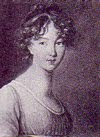
Knitting history is what I try to do and so, with lots of leftover skeins, partial and whole, of Paternayan Pesian crewel/tapestry/needlepoint wool, I knit this piece, randomly using colours. History is random and ever-changing, too, but also repeats itself, as do the wools. The letters are in evergreen, because history is alive, and green is my favourite colour. I considered doing an outline stitch around the letters to make them more prominent but decided against that for two reasons, namely, I do not like to mix techniques in my work, and the lessons of history are not always evident, and thus, to use the cliche, it is doomed to repeat itself. If we could all clearly see the lessons of history all of the time, that would not happen, a theory, of course, which ignores the human factor. The corners are not beautifully and invisibly sewn as they are scars that all history leaves behind.
The piece measures 16” across and 10” down and the capital letters measure 2” high. It was knit it on 2.75/2US size needles.
I am still blocking the piece and will probably knit a plain back piece and attach it to the front to keep it flat as the edges keep curling inwards, no matter how much I block them. The knitting on the edge/frame sections is flatter probably because I was not changing colours as much nor was I carrying the green strands behind. I probably should have made the edges/frame sections wider but I was just about out of wool so I had to stop. In fact, if you enlarge the photo and look very carefully at the bottom row of the piece, you will see an almost complete row of brown as I ran out of black at the very end.


